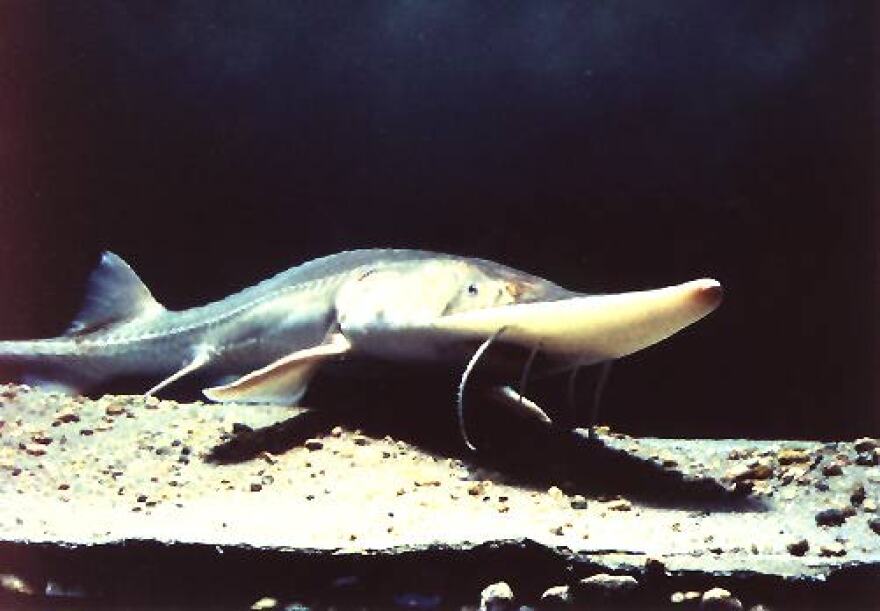The U.S. Fish & Wildlife Service released a new recovery plan this week for the endangered pallid sturgeon.
The pallid sturgeon is a large bony fish whose range stretches from the southern Mississippi and Atchafalaya Rivers, up the Missouri River into the Dakotas and Montana. But numbers of this large, ancient bottom-feeder declined as the rivers were channelized. It was listed as an endangered species in 1990.
The U.S. Fish & Wildlife Service’s George Jordan said a revision was needed because the old plan was adopted in 1993.
“We’ve learned a lot since then,” Jordan said. “A plan shouldn’t sit out there as long as this one did.”
Jordan said biologists have learned much more about pallid sturgeon, its habitat needs, life history requirements and potential bottlenecks for recovery since the first recovery plan.
Jim Garvey is the director of the Center for Fisheries, Aquaculture, and Aquatic Sciences at Southern Illinois University. Instead of managing the species for the entire range, he said the new plan allows management of population segments.
“We have a very different set of circumstances that are influencing pallid sturgeon than, for example, up in the Great Plains, which is the dammed portion of the river,” Garvey said. “The recovery options down here in the middle Mississippi are very different than the recovery options up in the upper Missouri River.”
The new plan divides the fish’s range into four management units. If 5,000 breeding adults are present in one of those regional units, it can be listed regionally as a threatened species instead of an endangered species.
There are adult pallid sturgeon in the middle Mississippi River, but it is unclear if they are reproducing and creating viable offspring. Many pallid sturgeon in the Missouri River were bred in captivity and released.
Garvey believes the new plan provides scientists with a whole new set of directions for research.
“It identifies still where some of our gaps are, but also helps us to realize that some of the things that we’ve done, for example the stocking program in the upper Missouri River, has kept the population going,” Garvey said. “That is a success story.”

